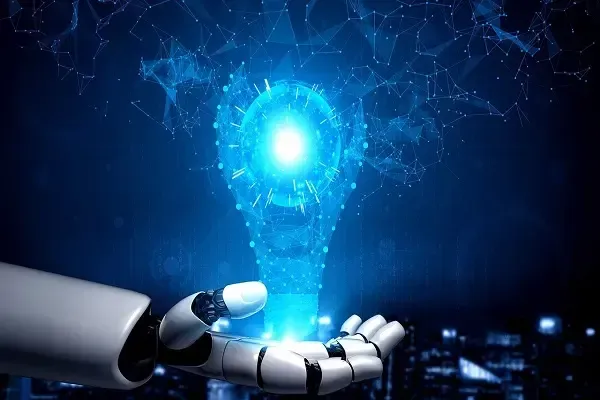
What is AI Automation? How It’s Shaping the Future of Work
Hey everyone! Ever feel like technology is changing so fast it's hard to keep up? You're not alone. One of the biggest changes we're seeing right now is AI automation. You've probably heard the term, but maybe you're not quite sure what it really means.
That’s okay! This guide is here to help. Think of it as your friendly introduction to the world of AI automation. Why should you care, especially if you’re just starting out in your career, or running a small business here in Australia? Because AI automation is already transforming the way we work, and understanding it is key to staying competitive and relevant.
My goal here is to explain what AI automation is, how it works, and how it’s shaping the future of work. We’ll break down the techy stuff in a way that's easy to understand, even if you’re not a computer whiz. So, grab a coffee, settle in, and let’s explore the exciting world of AI automation together!
What Exactly Is AI Automation?
Okay, let’s get down to brass tacks. AI automation is basically the art of using Artificial Intelligence (AI) to automate tasks. Simple, right? Well, almost.
Think of "automation" as using machines or software to do things that used to require human effort. For example, setting up an automatic email reply when you're on vacation is simple automation. It follows a set rule: "If someone emails me, send this message."
Now, add AI to the mix, and things get way more interesting. AI isn’t just about following rules; it's about learning from data and making decisions. That's what makes it so powerful in automation.
AI automation, therefore, is about using AI to automate tasks that require intelligence, learning, and adaptation.
So, instead of just following pre-set rules, an AI-powered system can:
Learn from data: Analyze mountains of information to identify patterns and insights.
Make decisions: Based on its learning, it can decide the best course of action.
Adapt to change: It can adjust its strategies as new information becomes available.
The Difference Matters: AI Automation vs. Regular Automation
It’s crucial to understand the difference between AI automation and simple automation.
Simple Automation: Think of a factory robot that welds car parts. It does the same thing, in the same way, every time. It's pre-programmed and inflexible.
AI Automation: Imagine a chatbot that answers customer questions. It can understand the nuances of language, learn from each conversation, and provide increasingly accurate and helpful answers over time.
See the difference? AI automation is dynamic, intelligent, and capable of handling complex and unpredictable situations.
Examples in the Real World
You probably interact with AI automation more than you realise. Here are a few examples:
Recommendation Engines: Netflix suggesting shows you might like? That's AI automation in action.
Fraud Detection: Your bank flagging a suspicious transaction? AI is helping to protect your money.
Self-Driving Cars: This is a big one! AI is enabling cars to navigate roads and make driving decisions.
Spam Filters: Gmail's spam filter uses AI to learn what constitutes spam and automatically filters it out of your inbox.
Supply Chain Optimization: Companies use AI to predict demand, optimise routes, and manage inventory more efficiently.
How Does AI Automation Work? (A Peek Under the Hood)
Okay, so how does all this magic happen? While we won't dive into super technical details, let's cover the basics. At the heart of AI automation are a few key technologies:
Machine Learning (ML): This is the engine that powers AI's ability to learn. ML algorithms are trained on vast amounts of data, allowing them to identify patterns, make predictions, and improve their performance over time.
Natural Language Processing (NLP): This allows AI systems to understand and process human language. It’s what enables chatbots to understand your questions and provide relevant answers.
Robotic Process Automation (RPA): This involves using software "robots" to automate repetitive tasks that humans typically perform, like data entry, form filling, and invoice processing. While traditional RPA is rule-based, when combined with AI, it can handle more complex and unstructured tasks.
The Learning Process: From Data to Decisions
Think of it like teaching a child. You show them examples, correct their mistakes, and gradually they learn to do things on their own. AI systems learn in a similar way:
Data Input: The system is fed with massive amounts of data relevant to the task it needs to perform.
Training: The ML algorithm analyses the data, identifying patterns and relationships.
Model Development: The algorithm creates a model that represents what it has learned.
Testing: The model is tested with new data to see how well it performs.
Deployment: Once the model is accurate enough, it's deployed to automate the task.
Continuous Improvement: The system continues to learn from new data, improving its performance over time.
Real-World Scenario: Automating Invoice Processing
Let's say a company wants to automate its invoice processing.
Data: The AI system is fed thousands of invoices, both processed and unprocessed.
Learning: The ML algorithm learns to identify key information on the invoices, such as the invoice number, date, vendor, and amount due.
Automation: The system can then automatically extract this information from new invoices, validate it against existing data, and route it for approval.
Human Oversight (Initially): At first, humans might need to review the AI's work to ensure accuracy.
Improved Accuracy: Over time, the AI learns from its mistakes and becomes increasingly accurate, reducing the need for human intervention.
The Benefits of AI Automation in the Workplace: Why You Should Care
Now, let’s talk about why all this is important for you, whether you're an employee or a business owner. AI automation offers some serious benefits:
Increased Efficiency and Productivity: AI can perform tasks much faster and more accurately than humans, freeing up employees to focus on more strategic and creative work.
Reduced Human Error: We all make mistakes. AI, when properly trained, can significantly reduce errors, especially in repetitive tasks.
Cost Savings and Resource Optimization: By automating tasks, businesses can reduce labour costs, optimise resource allocation, and improve their bottom line.
Enhanced Employee Focus on Higher-Value Tasks: Imagine your employees spending less time on tedious paperwork and more time on innovation, problem-solving, and building relationships with customers.
Better Customer Experience: AI-powered chatbots can provide 24/7 customer support, personalised recommendations, and faster resolution of issues, leading to happier customers.

Industries Seeing the Biggest Impact
While AI automation is transforming all industries, some are seeing a particularly big impact:
Manufacturing: AI is being used for quality control, predictive maintenance, and optimising production processes.
Finance: AI is being used for fraud detection, risk management, and personalised financial advice.
Healthcare: AI is being used for diagnosing diseases, developing new drugs, and personalising patient care.
Retail: AI is being used for personalised recommendations, optimising inventory, and improving the customer experience.
Logistics: AI is being used for optimising delivery routes, managing warehouses, and predicting demand.
Common Applications of AI Automation Today: Where You'll See It in Action
Let’s explore some specific examples of how AI automation is being used in different areas:
Customer Service Chatbots: These virtual assistants can answer customer questions, resolve issues, and provide personalised recommendations 24/7.
Data Processing and Analysis: AI can automatically extract, clean, and analyse massive amounts of data, providing valuable insights for decision-making.
Automated Marketing Campaigns: AI can personalise marketing messages, target specific audiences, and optimise campaigns for maximum impact.
Manufacturing and Supply Chain Automation: AI can optimise production processes, predict demand, manage inventory, and improve supply chain efficiency.
HR and Recruitment Automation: AI can automate tasks like screening resumes, scheduling interviews, and onboarding new employees, freeing up HR staff to focus on more strategic initiatives.

How AI Automation Is Shaping the Future of Work: Get Ready for Change
Okay, now for the big question: how is AI automation going to change the future of work? Here are some trends and predictions:
Increased Automation of Repetitive Tasks: As AI technology advances, we can expect to see more and more repetitive tasks being automated, across all industries.
The Evolution of Employee Roles: The roles of employees will evolve from performing repetitive tasks to focusing on higher-value activities like problem-solving, creativity, and collaboration.
Job Creation and Transformation: While some jobs may be automated, AI will also create new jobs in areas like AI development, data science, and AI ethics.
The Importance of Upskilling and Adaptability: To thrive in the age of AI, it's crucial to develop skills like critical thinking, problem-solving, creativity, and emotional intelligence. And most importantly, be willing to learn new things throughout your career.
My Own Experience: In my line of work, I've seen firsthand how AI is transforming the way we approach content creation and marketing. Tasks that used to take hours can now be done in minutes, freeing up our team to focus on more strategic initiatives. However, it’s important to remember that AI is a tool, and humans are still needed to provide the creative spark and strategic direction.
Challenges and Considerations with AI Automation: It's Not All Sunshine and Roses
While AI automation offers many benefits, it also presents some challenges and considerations:
Ethical Concerns and Bias: AI systems are trained on data, and if that data reflects existing biases, the AI system will perpetuate those biases. It's crucial to ensure that AI systems are developed and used in a fair and ethical way.
Job Displacement Fears and How to Address Them: The fear of job displacement is a real concern. However, it's important to remember that AI will also create new jobs. The key is to invest in training and education programs to help workers transition to new roles.
Data Privacy and Security Issues: AI systems require vast amounts of data, raising concerns about data privacy and security. It's crucial to implement robust security measures to protect sensitive data.
Integration Challenges for Businesses: Integrating AI systems into existing business processes can be complex and challenging. It's important to have a clear strategy and to work with experienced partners.

Getting Started with AI Automation: Tips for Beginners
So, how can businesses begin adopting AI automation? Here are a few tips:
Identify Repetitive Tasks to Automate: Start by identifying tasks that are repetitive, time-consuming, and prone to error.
Select the Right Tools and Partners: There are many AI automation tools and platforms available. Choose the ones that best meet your specific needs and work with experienced partners who can help you implement them.
Train Your Teams and Manage Change: AI automation will require changes to your business processes and workflows. Train your teams on how to use the new tools and manage the change effectively.
Start Small and Scale Gradually: Don't try to automate everything at once. Start with a small pilot project and gradually scale up as you gain experience.
Focus on Value and ROI: Make sure that your AI automation projects are aligned with your business goals and that you can measure the return on investment.
Conclusion: Embracing the Future
AI automation is rapidly changing the way we work, and it's essential to understand its potential and its challenges. By embracing AI automation strategically, businesses can increase efficiency, reduce costs, improve customer experience, and create new opportunities.
The future of work is here, and it's powered by AI. Don't be afraid to embrace it!
Ready to take the next step? Learn more about AI automation solutions or contact our agency for guidance on how to implement AI in your business. We’re here to help you navigate this exciting new world. Let's build the future of work together!

